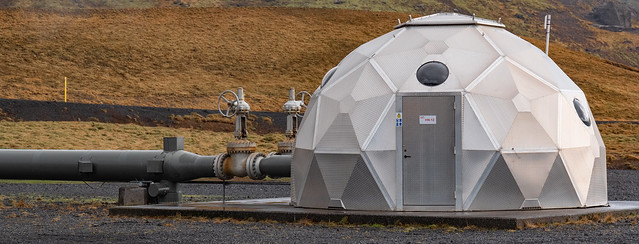
On Wednesday morning of this week, POLITICO held a virtual event: “Energy Visions: Carbon removal and natural sinks in reaching climate neutrality by 2050”.
I was fortunate to have the opportunity to open the event with a few minutes of remarks to set the scene. This was followed by a discussion between the POLITICO moderator and Tina Bru, Norway’s Minister of Petroleum and Energy and then a panel session with;
- MEP Bas Eickhout, Vice Chair of the Parliament’s Environment Committee and spokesperson for the Greens political group
- Mauro Petriccione, European Commission Director General for Climate Action
- Jannicke Gerner Bjerkås, CCS Director at Fortum
- Gert-Jan Nabuurs, professor European Forest Resources, Wageningen University and Research IPCC Co-ordinating Lead Author
Although the panel couldn’t agree on how to handle the introduction of sinks into the EU as an emissions balancing mechanism, for me at least it is clear that the EU Emissions Trading System offers the simplest route forward. I have also written about this previously. See below for my opening remarks at the POLITICO event.
Good morning.
I want you to imagine for a moment that it is 2050, perhaps your autonomous electric car is already waiting in the driveway to shuttle you to the railway station, and as you step outside the house system shuts off most indoor electricity consumption. On your way to work you start thinking about an event your company had participated in a few days earlier; the last allowance auction under the EU Emissions Trading System. Now that the EU has reached net-zero emissions there would be no further allocation or auctions, in fact no more allowances.
But there is the familiar sound of planes at the nearby airport as the 787 and A350 departures continue, seemingly without pause. Although the first hydrogen fueled Boeing 808 and Airbus A500 planes can now be seen in the skies, a good proportion of air traffic still runs on jet fuel produced from crude oil. Biojet makes up the difference.
The railway station you use is in an industrial part of the city and the cement plant that was constructed there in 2030 using the most efficient process design of the day continues to operate, running on natural gas. It was built to supply concrete foundations for the gigantic 20 MW turbines in the burgeoning wind energy market.
These planes and industrial facilities are part of the 2050 EU landscape and continue to operate but do so in the absence of allowances under the EU Emissions Trading System. How will that be possible?
It is important to recognize that net-zero emissions in 2050 does not represent a point in time when there is no fossil fuel use and therefore no emissions. Today we are 70% dependent on fossil fuels for energy in the EU and although that number is clearly falling, it won’t be zero in 2050. In some cases the technologies required to remove dependence on fossil fuels don’t yet exist or are only at the earliest stages of their development. While some facilities using fossil energy should have carbon capture and storage operating by 2050, that won’t be true in all cases. Planes cannot do this and there will be regions within the EU where local at source carbon capture and storage either isn’t practical or cannot be implemented.
Rather, net-zero represents a balance between remaining emissions and the remote removal of carbon dioxide from the atmosphere. This can be achieved by 2050 in the EU, but we need the policy tools to guide us towards such an outcome. The EU Emissions Trading System is an excellent candidate for change.
Today the Emissions Trading System operates by surrendering allowances against emissions, but when the system ceases to have allowances in 2050, what happens? The Emissions Trading System needs to progress from an allowance-based system to one that manages net-zero emissions by requiring the surrender of sink based units against annual emissions. A sink unit wouldn’t be issued in the way an allowance is but would be created through projects that captured carbon dioxide from the atmosphere and permanently stored it. There are broadly three ways to do this;
One – through industrial projects that strip carbon dioxide from the atmosphere and store it geologically or use it in a way that offers near permanence, such as in making building materials.
Two – through the use of biomass to create energy but capturing and storing the carbon dioxide released in the process, which originated from the atmosphere as the biomass was grown. There is a bio-ethanol plant doing this today in the United States.
And three – by engaging in natural based projects such as rewilding and reforestation, or encouraging farmers to employ different grazing and cultivation techniques which help build soil carbon stocks.
Verified removal units from these types of projects will need to be part of the Emissions Trading System so that some parts of industry and various energy system services can continue operating past 2050. But the change to the trading system needs to be well before 2050, ensuring that enough capacity can be created by incentivising sink activity. A very early milestone would be establishing the certification process for removals within the EU.
Earlier this year Shell released a scenario Sketch illustrating a pathway forward for the EU to reach net-zero emissions by 2050. In that analysis, industrial bioenergy facilities with carbon capture and storage start to operate in the EU by 2035, which points to market signals emerging in the 2020s for project activity to start. We also showed that a gap between what can be achieved and what needs to be achieved for net-zero by 2050 also starts to emerge in 2035. This gap could be filled with nature-based sinks, at least until industrial capacity can catch up, but once again this will require a commercial carbon sink mechanism to incentivise action.
We shouldn’t forget about the period after 2050, at which point the world may require progressive regions such as the EU to extend their reductions into negative territory, in other words having more sinks than emissions. Trading of sinks could be a valuable export opportunity for the EU.
The EU Emissions Trading System is the right commercial lever to drive sink activity forwards, partly because of its carbon pricing structure but also because it must evolve to become a sinks and sources balancing system by 2050. As part of the current rethink of the trading system in preparation for 2030 and beyond, a sink mechanism should be included. Initially this could simply be the recognition of sink units from projects within the EU but should eventually be extended to global recognition of units. These would be transferred under Article 6 of the Paris Agreement along with the necessary safeguards to guarantee environmental integrity and the adjustment of trading partner carbon registries.
Without action in the 2020s to incentivise carbon sinks and subsequent follow-up in the 2030s, the EU may find itself unable to meet its net-zero emissions goal in 2050.
Thank you


Average Rating